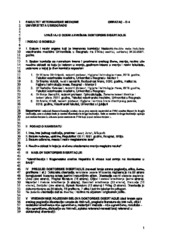Приказ основних података о дисертацији
Identifikacija i filogenetska analiza hepatitis E virusa kod svinja u klanicama u Srbiji
Identification and molecular characterization of the hepatitis E virus in slaughter pigs in Serbia
| dc.contributor.advisor | Dimitrijević, Mirjana | |
| dc.contributor.advisor | Velebit, Branko | |
| dc.contributor.other | Karabasil, Neđeljko | |
| dc.contributor.other | Radojičić, Sonja | |
| dc.contributor.other | Kirbiš, Andrej | |
| dc.creator | Milojević, Lazar | |
| dc.date.accessioned | 2021-12-16T11:51:34Z | |
| dc.date.available | 2021-12-16T11:51:34Z | |
| dc.date.issued | 2021-09-03 | |
| dc.identifier.uri | http://eteze.bg.ac.rs/application/showtheses?thesesId=8419 | |
| dc.identifier.uri | https://fedorabg.bg.ac.rs/fedora/get/o:24653/bdef:Content/download | |
| dc.identifier.uri | http://vbs.rs/scripts/cobiss?command=DISPLAY&base=70036&RID=52980233 | |
| dc.identifier.uri | https://nardus.mpn.gov.rs/handle/123456789/18780 | |
| dc.description.abstract | Povećana urbanizacija stanovništva i trend sve učestalijih putovanja, potom transport životinja i globalna orjentacija tržišta hrane, samo su neki od faktora koji su dovode do širenja mnogih patogenih mikroorganizama u sve delove sveta. Među njima je svakako i virus hepatitisa E (HEV), koji predstavlja sve važniji problem za javno zdravlje u mnogim zemljama. Epidemiološkim studijama je ustanovljeno da je u zemljama Evropske Unije kontaminirana hrana dominantni put prenosa ovog oboljenja, kao i da su glavni izvori HEV-a domaće, divlje svinje i jelenska divljač. Identifikacija virusa uz pomoć savremenih molekularno-bioloških metoda ukazala je da kontaminirana hrana iz jedne države može daljim distribuiranjem izazvati pojavu bolesti bilo gde u svetu. U Republici Srbiji, gde je visoka stopa potrošnje svinjskog mesa, ne postoji dovoljno podataka o prevalenciji ovog virusa kod životinja, kao ni u mesu i proizvodima od mesa svinja, koji može predstavljati rizik po zdravlje krajnjeg potrošača. U ovom istraživanju, tokom četiri sezonska perioda u jednoj godini, ispitano je 900 uzoraka jetre i 60 briseva sa površina i opreme iz tri klanice locirane u tri različita okruga na teritoriji Republike Srbije. Takođe su u istim okruzima istovremeno ispitani uzorci jetre iz maloprodaje (60). Primenom molekularne metode RT-qPCR, prisustvo HEV-a ustanovljeno je kod 29% ispitivanih uzoraka jetri svinja poreklom sa klanica. U kategoriji svinja mlađih od 3 meseca, virus je utvrđen je kod 44% ispitanih uzoraka, dok kod svinja starijih od 6 meseci nije dokazano njegovo prisustvo. Takođe, prisustvo HEV-a utvrđeno je kod 22% uzoraka briseva sa površine i opreme. Najveći broj pozitivnih nalaza (50%) bio je Sremskom okrugu. Kod uzoraka jetri iz maloprodaje, od ukupno 60 testiranih, HEV otkriven je kod 3 (5%) uzorka. Statističkom obradom dobijenih podataka utvrđeno je da pol nije u korelaciji sa HEV prevalencijom kod životinja. Za razliku od toga, potvrđena je različita geografska distribucija HEV-a. Najveći procenat pozitivnih uzoraka utvrđen je u Sremskom okrugu (49% kod ukupnog broja uzoraka i 73,5% kod uzoraka jetri svinja mlađih od 3 meseca). Nasuprot tome, Šumadijski okrug imao je najmanji procenat pozitivnih nalaza na HEV (4,67% kod ukupnog broja uzoraka i 7% kod starosne kategorije mlađi od 3 meseca). Ustanovljena je sezonska učestalost nalaza HEV-a kod svinja. Tokom godine utvrđena su dva pika u prevalenciji, koja se javljaju tokom zimske i letnje sezone. Rezultati filogenetske analize pokazali su da postoji visok stepen sličnosti između izolata dobijenih u ovom istraživanju i već opisanih u svetu. Od 52 ispitana izolata, 43 (82,7%) pripadalo je subgenotipu HEV-3a, pri čemu je prosečna genetička udaljenost među njima iznosila 6,5%. Dva izolata (3%) pripadala su subgenotipu HEV-3c, njih šest (11,5%) svrstani su u HEV-2a, dok je jedan izolat (1,9%) pripadao genotipu 3, pri čemu nije bilo moguće odrediti njegov subgenotip (najsličniji HEV-3c, HEV-3h i HEV-3i). Rezultati kvantifikacije pozitivnih uzoraka pokazali su da je tkivo jetre u proseku bilo opterećeno sa 4,41 log10 (2,5×104) genomskih kopija HEV po gramu tkiva. Broj genomskih kopija po gramu se tokom celokupnog perioda istraživanja kretao u intervalu od 1,0 do 9,16 log10. Statističkom obradom dobijenih podataka o broju genomskih kopija po gramu, a na osnovu geografskog porekla uzoraka, utvrđeno je da je medijana najvećeg broja genomskih kopija po gramu bila u Sremskom okrugu (4,30 log10) i statistički je bila značajno viša u odnosu na preostala dva ispitivana okruga (2,94 log10 u Šumadijskom okrugu i 3,74 log10 u Kolubarskom okrugu). | sr |
| dc.description.abstract | Increased urbanization and change of the food market from locally oriented toward globally driven, has pushed policy makers to impose more stringent hygienic standards and various control strategies for pathogenic bacteria, viruses, and parasites. Foodborne illnesses caused by viruses are a significant and emerging global problem, and because od that, an important cause of reducing economic growth in many countries. Identification of the viruses by modern molecular-biological methods has indicated that contaminated food from one country by further distribution can cause disease anywhere in the world. Among them, certainly is hepatitis E virus (HEV), which poses growing public health problem in many countries. In industrialized countries (European Union), food is the main transmission route of this virus, while the most important animal reservoirs are domestic pig (Sus scrofa domestica), wild boar (Sus scrofa) and deer (Cervidae). Furthermore, pork livers and pork liver products are the most important sources of foodborne HEV. In the Republic of Serbia, where the rate of pork meat consumption is high, there are still scarce data on the prevalence of this virus in pork liver, meat and pork products, as well as an adequate answer to the main question of whether this virus can really pose a health risk to the end consumers. In this study, a total of liver samples (N=900) and food-contact-material swabs (N=60) from three mid-size slaughterhouses located in three different districts in the territory of the Republic of Serbia were examined during one-year period. Next, liver samples (N=60) from the retail stores located within same districts were collected and examined independently from other samples and without any association to the samples sampled at abattoir, mentioned above. Out of all samples tested, originating from three slaughterhouses, 261 samples (29%) were positive for HEV. Classifed by age categories, HEV was discovered in 261 livers (44%) from < 3-month-old piglets in the examined counties, while HEV was not detected at all in pigs older than 6 months. HEV was detected in 13/60 (22%) swabs of food contact surfaces and equipment. HEV was found in 3 liver samples (5%) sampled at retail stores. By statistical processing of the obtained results, we concluded that the gender was not corelated to the prevalence of HEV infection in animals. However, a different distribution of HEV by geographical area was confirmed. Among the three HEV-positive counties in Serbia, the highest prevalence was measured in Syrmia County (49% of total samples and 73.5% of samples from 3-month-old pigs), while the lowest was noted in Šumadija County (4.67% of total samples and 7% of samples from 3-month-old pigs). Seasonal patterns of HEV findings in pigs were determined. Two peaks of HEV RNA prevalence have occured during the winter and summer seasons, respectively. The results of phylogenetic analysis showed that there was a high genetic homegeneity between Serbian HEV sequences and European HEV sequences. Phylogenetic analysis of the 52 Serbian HEV strains, showed that 43 (82.7%) belonged to the HEV-3a subgenotype, with the average genetic diversity between them being 6.5%. Furthermore, two isolates (3%) belonged to the HEV-3c subgenotype, six of them (11.5%) were classified as HEV-2a, while one isolate (1.9%) belonged to genotype 3 but could not be assigned to any of known subgenotypes (most similar to HEV-3c, HEV-3h and HEV-3i). The results of quantification of HEV positive samples showed that the average viral load of liver tissue was 4.41 log10 (2.5 × 104) genomic copies/g (gc/g). Level of viral contamination during the entire study period ranged from 1.0 to 9.16 log10 gc/g. By processing of the obtained quantitative data, we determined that the highest median value was in Syrmia County (4.30 log10 gc/g) and it was statistically significantly higher compared to other two counties (2.94 log10 gc/g in Šumadija County, i.e., 3.74 log10 gc/g in Kolubara County). | en |
| dc.format | application/pdf | |
| dc.language | sr | |
| dc.publisher | Универзитет у Београду, Факултет ветеринарске медицине | sr |
| dc.rights | openAccess | en |
| dc.rights.uri | https://creativecommons.org/licenses/by-nc-nd/4.0/ | |
| dc.source | Универзитет у Београду | sr |
| dc.subject | Virusi koji se prenose putem hrane | sr |
| dc.subject | Foodborne viruses | en |
| dc.subject | virus hepatitisa E | sr |
| dc.subject | svinjska jetra | sr |
| dc.subject | RT-qPCR | sr |
| dc.subject | bezbednost hrane | sr |
| dc.subject | hepatitis E virus | en |
| dc.subject | pig liver | en |
| dc.subject | RT-qPCR | en |
| dc.subject | food safety | en |
| dc.title | Identifikacija i filogenetska analiza hepatitis E virusa kod svinja u klanicama u Srbiji | sr |
| dc.title.alternative | Identification and molecular characterization of the hepatitis E virus in slaughter pigs in Serbia | en |
| dc.type | doctoralThesis | |
| dc.rights.license | BY-NC-ND | |
| dcterms.abstract | Димитријевић, Мирјана; Кирбиш, Aндреј; Радојичић, Соња; Велебит, Бранко; Карабасил, Неђељко; Милојевић, Лазар; Идентификација и филогенетска анализа хепатитис Е вируса код свиња у кланицама у Србији; Идентификација и филогенетска анализа хепатитис Е вируса код свиња у кланицама у Србији; | |
| dc.identifier.fulltext | http://nardus.mpn.gov.rs/bitstream/id/78048/Referat_Milojevic.pdf | |
| dc.identifier.fulltext | http://nardus.mpn.gov.rs/bitstream/id/78049/Disertacija_11875.pdf | |
| dc.identifier.rcub | https://hdl.handle.net/21.15107/rcub_nardus_18780 |



